Looking for ways to take your public relations writing to the next level?
In this guide, I’m going to help you do exactly that.
I’ll be giving you 7 ways to improve your PR writing for effective public relations campaigns.
So, if you want to become a better PR writer, you’re going to need this guide.
Let’s get into it.
Link building cheat sheet

Way #1: Tell a Story
Every public relations professional knows that telling a story is essential when it comes to public relations writing.
A story that resonates with your target audience can be much more effective than a simple news release, an op-ed, or any other public relations material for that matter.
Author’s Note: According to Wikipedia, “an op-ed, short for ‘opposite the editorial page’, is a written prose piece typically published by a newspaper or magazine which expresses the opinion of an author usually not affiliated with the publication’s editorial board.”
Of course, telling a story isn’t always easy.
However, PR professionals from big brands like Adobe teach us how integrating stories into your public relations writing can make all the difference.
For example, let’s take a look at the following news release by Adobe:

At first, this seems like an uninteresting announcement that has little to do with PR.
After all, how exciting can it be when a C-level executive leaves the company and is succeeded by someone taking their place?
However, if you scroll down a bit, you’ll actually see a story being uncovered—one that makes the transition interesting and gets the audience to look forward to the future.
For example, Adobe starts the second paragraph of its news release by stating some of Vaas’ accomplishments while on the company’s legal team:
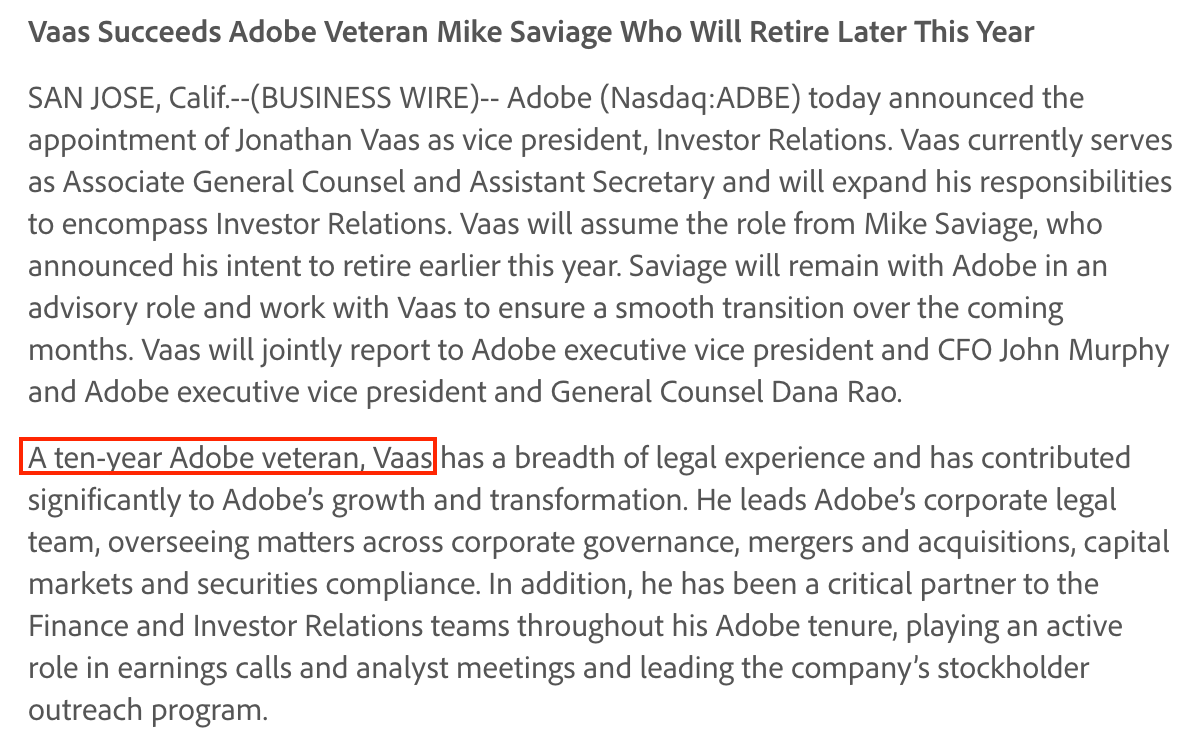
It continues with some of the accomplishments and contributions of Mike Saviage during his 25 years with Adobe.
This helps Adobe’s a) employees and b) investors feel safe and secure about what’s coming, while at the same time value Saviage’s contribution to the company.
This is what telling a story looks like.
In general, storytelling is one of the most effective ways to succeed in business communications, regardless of whether you’re a small business or a major corporation.
Of course, this rule doesn’t apply only to news releases, whitepapers, fact sheets and other PR-related material.
It applies to all forms of digital communication.
Let me give you an example.
Medium is a website where people go to publish and read stories on topics they’re interested in.
Until 2018, most of the Medium’s top stories were about the writers who published them.
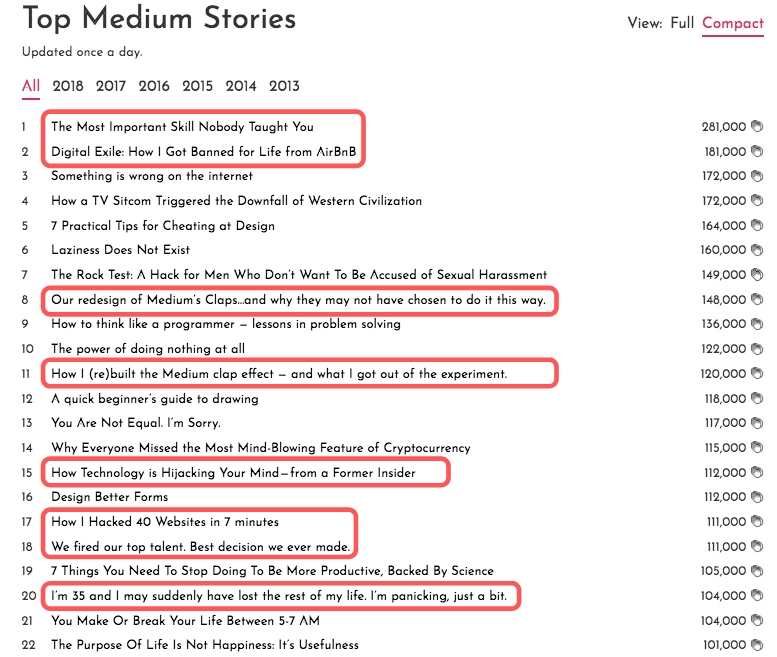
Of course, that could be explained by the fact that people browsing Medium are in the mood to search for actual stories.
Thus, they’re more likely to interact with a good story that’s published on the platform.
However, there’s another explanation for why stories work so well.
People are able to see their own fears, situations and life events reflected in these stories.
This is why stories are so powerful.
If you want to take your public relations writing to the next level, be sure to use them.
Way #2: Have a Clear Structure
The second thing you need to pay attention to when writing for PR is to have a clear structure.
In other words, be clear about what you want to promote and what desired action you want people reading your PR material to take.
This doesn’t mean you need to adjust your writing style and be someone you’re not or write an entire custom essay just to meet a prompt.
Rather, it means your writing needs to showcase elements of your own character.
Let’s use an example to make this concept easier to understand.
For the sake of example, let’s assume you want to promote a new study your company made on technology adoption.
To promote your piece of content, you decide to reach out to a list of people who are interested in the same topic and often write about it.
So, after doing your public relations research, you send the following email:
Subject: subject
/Hey {first_name},
I’ve been looking for a few folks who have covered the topic of technology adoption and found your awesome post on {website_name}.
Loved the way you said [Insert Article Summary].
To conduct our own study, we’ve used [technology for retrieving and analyzing data]. Some of the main findings of the study include:
[Point 1]
[Point 2]
[Point 3]
You can take a look here:
example.com/technology-adoption
Could you share your feedback with us when you do?
Thanks,
{Name}
Editor’s Note: This is one of the eight media pitch examples included in one of our recent blog posts.
If you take a close look at the above template, you’ll notice that the intent behind it is very clear.
The email clearly explains what the study is all about and asks for the recipient’s feedback.
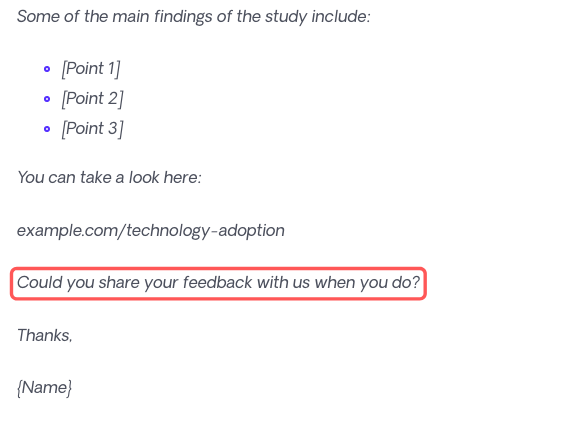
The email also shares more about the study using bullet points as shown below:
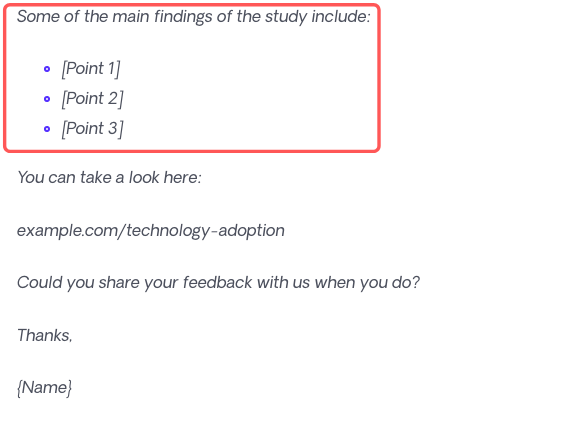
This answers the “what’s in it for me?” question that the recipient of the email (AKA the prospect) has as soon as they receive it.
Last but not least, our pitch is very clear about why we decided to reach out to this particular person.
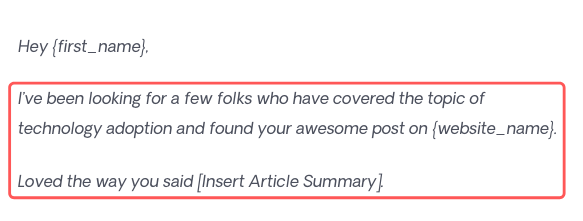
Placing those two sentences at the beginning of our email helps us to:
- Explain why we consider our prospect as someone relevant to receive our email.
- Show appreciation for our prospect’s work on the topic.
Thus, you can see that a simple email with no more than 100 words (78 in the body text) explains clearly a) what we’ve done, b) what the benefit is for the recipient and c) what we need from them.
The same logic should be extended to all your media relations materials, both written and verbal.
Having a clear structure can help you communicate your message more clearly and get more out of your PR efforts.
Way #3: Support Your Statements With Data
As we mentioned in our guide on how to write a press release, it’s important that you support your statements and every piece of information you provide with data.
Every experienced public relations practitioner knows that, especially when writing about a topic that’s controversial, backing up everything you say with data makes your writing more authoritative.
This can help your message get accepted.
Mass communication and mass media are heavily based on that principle.
The same applies to PR writing.
Data can be particularly useful when you’re doing digital PR, trying to promote your products and services or promote a piece of content you’ve recently published.
According to a survey by content marketing agency FRACTL, one of the biggest mistakes media relations professionals can make is lack of research before pitching.

What does this show us?
That people want to get relevant and highly researched emails when getting pitched.
Be sure to keep this in mind when pitching or writing any kind of public relations material.
Way #4: Get to Know Your Audience
You don’t need me to tell you that knowing your audience is essential when it comes to public relations.
Of course, this has to do with what we mentioned in our previous point about carrying out thorough research before sending your email pitch.
Keep in mind that, especially if you’re pitching to journalists, there is a high chance your email will fall through the cracks.
Why is that?
Because “53% of top-tier publishers receive between five and 50 pitches per week.”
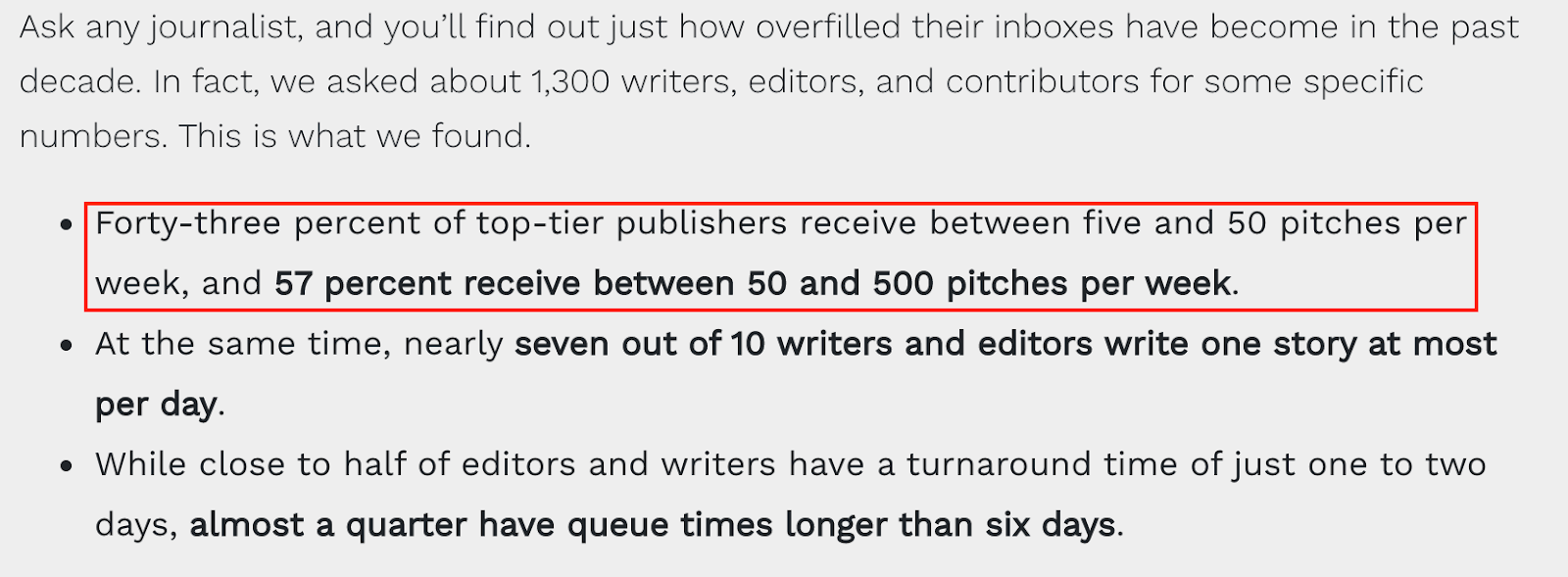
If you’re wondering if that’s a lot, think of your own inbox and add anywhere between 5-50 more emails from complete strangers every week.
This explains why almost 25% of these journalists have queue times of longer than six days.
Thus, if you think about it, the time you have to impress someone and get them to read your story is very low.
In fact, in most cases, your pitch will be “judged” solely by its subject line.
This is why having great communication skills simply isn’t enough when it comes to taking your public relations writing to the next level.
Using the best PR tools out there won’t be enough, either.
You actually need to know your audience and do your best to know what they need the next time you’re trying to communicate your message.
This applies to all forms of PR communication.
Some of the things you need to know—since we’re talking about journalists—are:
- Who these people are
- What topics they like to cover
- What publications they write for
- What specific opinions they have on things
In our guide on PR outreach, we break down the process of finding, qualifying and pitching to journalists to get press coverage.
Be sure to check it out.
Way #5: Stop Focusing on Yourself
According to PRSA, “Public relations is a strategic communication process that builds mutually beneficial relationships between organizations and their publics.”
Editor’s Note: PRSA stands for Public Relations Society of America.
Thus, by definition, PR is something that should be beneficial both for the creator of the message and its recipient.
This also means that to take your public relations message to the next level, you need to stop focusing on yourself.
Let’s illustrate that with a nice example.
The following press release was published on April 10, 2020 on Apple’s Newsroom.
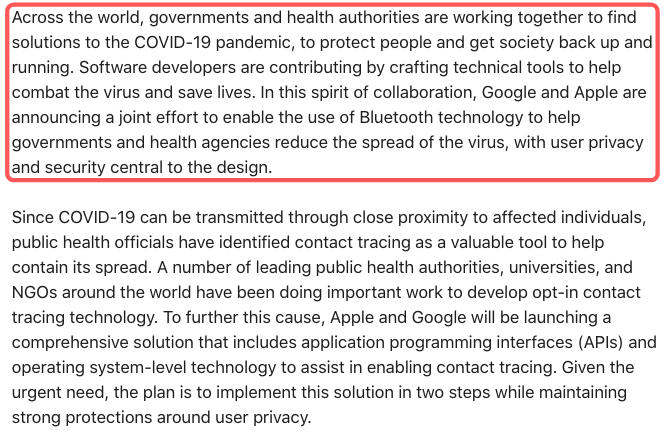
This press release is announcing a joint effort between Apple and Google to help governments and health agencies slow down the spread of the COVID-19 pandemic.
It doesn’t try to promote a product or service offered by any of the two companies.
Instead, it aims to add value based on a situation that’s currently affecting the majority of people living on this planet.
This is a great example of how (and why) writing for public relations shouldn’t always be about yourself.
Do you want to make a genuine impact with your public relations writing?
Stop writing for yourself and start focusing on others.
Way #6: Present a Clear Path
Presenting a clear path to what you want people reading your PR material to do next is essential to the success of your public relations efforts.
To do this, you can use the inverted pyramid as a model.
According to Wikipedia, “the inverted pyramid is a metaphor used by journalists and other writers to illustrate how information should be prioritised and structured in prose.”

As you can see, this framework breaks down the structure of your PR material into three parts:
- Most newsworthy info
- Important details
- General info
This is a structure that many journalists, PR agencies, and in-house public relations practitioners use when writing press materials (e.g. a news release).
As a marketer, I’d add that you should also include a relevant call-to-action (CTA) at the end of your press release, email pitch, or whatever is you’re promoting.
This is important because you want people to know the next steps they need to take based on what they’ve just read. For example:
- Do you want them to reply to an email?
- Do you want them to check out your new product on your website?
- Do you want them to view a new content piece you’ve published?
Then ask for it.
Whatever your end goal may be, you need to clearly ask for it.
Thus, after sharing all relevant information in a clear and concise way, you also need to present a clear path as to what the next steps are.
Let’s move on to the final method to help take your public relations writing to the next level.
Way #7: Give Your Audience a Reason to Care
The last method I have for you is to give your audience a reason to care.
Let me illustrate that with an example.
In December 2019, Brian Dean from Backlinko announced the launch of a new part of the website called the Content Marketing Hub.

According to Backlinko, this is a “free library of 30+ resources that cover everything you need to know about content marketing.”
You might assume that a news release like this would go largely unnoticed, since there are countless free resources around content marketing published online.
Why would this particular news release make any difference?
After all, according to Ahrefs, competition for the term “content marketing” is only growing.
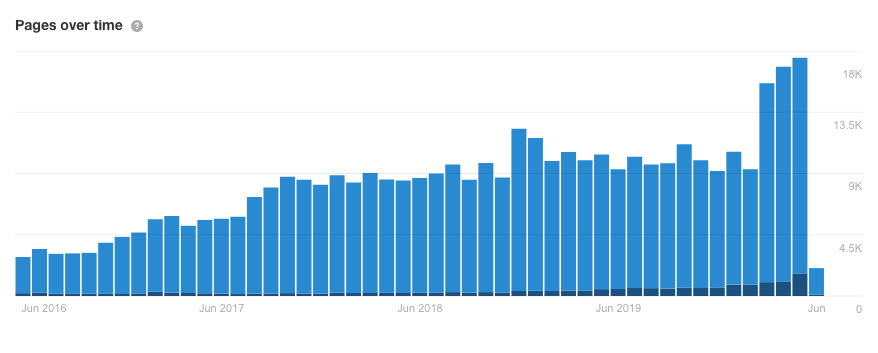
This means that people are already overburdened with choices when it comes to content around content marketing, and probably don’t need yet more of the same.
However, if we take a close look at that news release page, we’ll notice that as of this writing, the page already has 452 shares on social media.
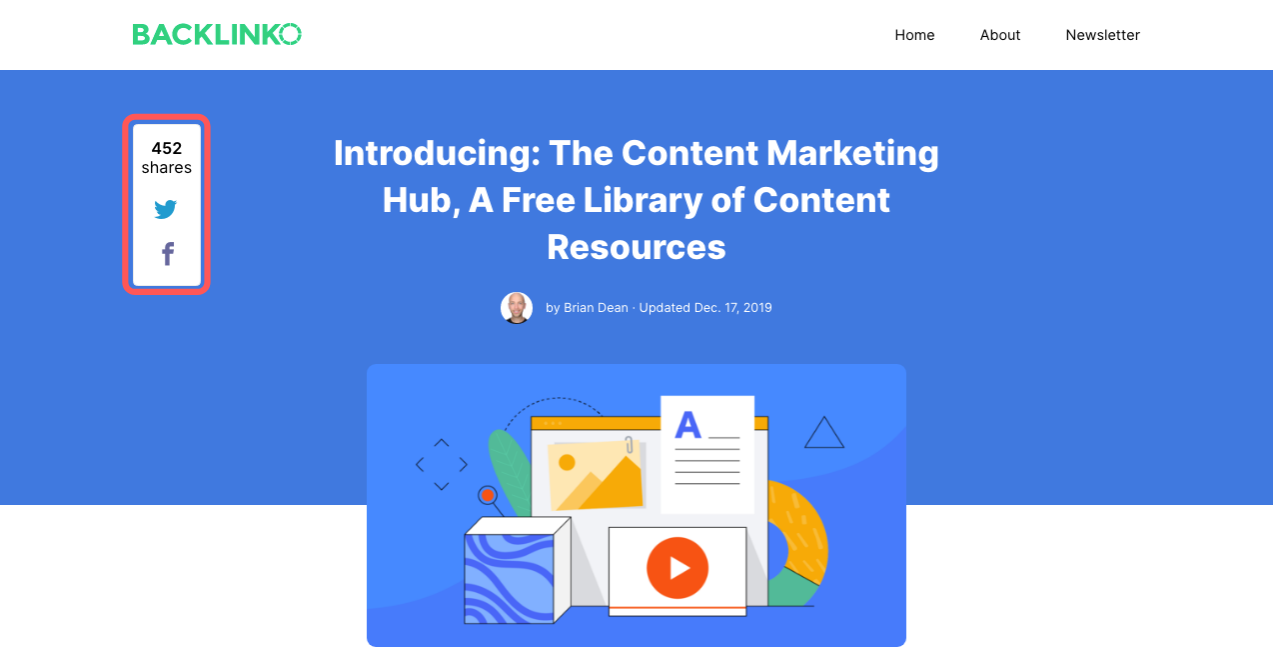
Not bad for a simple news release, right?
Moreover, if you scroll down to the comments section of the page, you’ll notice that this single post has 330 comments—including Brian Dean’s replies—most of which are enthusiastic about the announcement of the Content Marketing Hub.
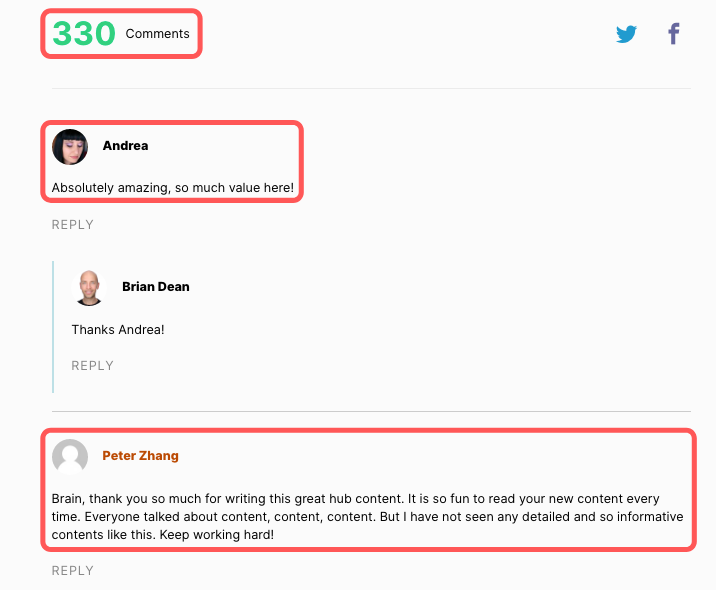
You may wonder why a simple news release attracted so much attention.
The first reason is obvious:
Backlinko is a website that already gets thousands of organic visits every month.
In fact, according to Ahrefs, the site now gets almost 250K organic visitors on a monthly basis.

This means that pretty much every piece of content will get at least some attention, even if it’s just a news release like the one we’re using here as an example.
However, the second reason is what makes the real difference here.
Brian Dean gives his audience a reason to care.
He knows that a resource that works as a content hub and answers most of his visitors’ questions around content marketing will be of great value to them.
In fact, if you visit the Content Marketing Hub, you’ll see that it’s a great resource for all things content marketing.

Small wonder then that it was accepted so well by Backlinko’s audience.
This simple example can help you understand the importance of truly knowing your audience when trying to communicate a message to them.
In plain English: give your audience a reason to care and their feedback will be positive.
This is a principle that applies especially to PR but also to any other form of communication.
Now, let’s wrap this up by closing with some final thoughts.
Link building cheat sheet
Wrapping Up
There you have it.
You now have 7 ways to help you become a more efficient and effective public relations writer.
No matter what your thoughts are on PR writing, keep in mind that writing for public relations isn’t that different from writing for any other medium or channel (e.g. social media).
Most of the rules that apply to writing for PR also apply to writing for other purposes.
Remember, good writing is about being honest with your audience and genuinely trying to add value in a direct way.
Now I’d like to hear from you:
What have you tried so far to write more effective press releases and improve your PR writing skills in general?
Let me know by leaving a brief comment below.







